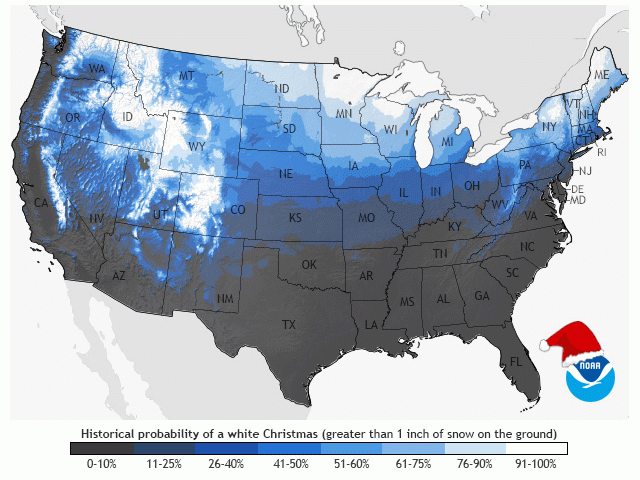
A chaotic December pattern has led some to believe that the chances for a white Christmas are higher than average this year. Will that turn out to be true?

A chaotic December pattern has led some to believe that the chances for a white Christmas are higher than average this year. Will that turn out to be true?

DTN/Progressive Farmer writers were asked to think back on their year and choose a favorite story they wrote. DTN Ag Meteorologist John Baranick said the total eclipse that occurred on April 8, 2024, was one of the most memorable events of his life.

Crops may be dormant in the United States, but Australia is amid their winter harvest. They may have to dodge showers throughout the harvest to bring in their potential record-breaking crop.

A taste of true winter temperatures has settled in during the last week. Arctic air has been forced into areas east of the Rockies and that continues all this week, too. However, warmer air will get pushed eastward this weekend. Systems are still forecast to move through next...

A 35-point rise in USDA's winter wheat index during autumn 2024 shows more evidence of heavy November rainfall.

Cold air will be spreading east of the Rockies behind a storm system that is moving through Wednesday and Thursday. Some very cold weather, the coldest of the season so far, will settle into the Central and Eastern U.S. But how long will this last?

Winter wheat ratings are now the highest this decade after generous rainfall over the past 30 days.

A storm system is forecast to cross the country during the middle of next week, causing hazards for Thanksgiving holiday travel.

Mild fall temperatures across the Midwest and Northern Plains are expected to take a cooler turn by next week, threatening winter wheat that is still emerging.

NOAA places the odds of 2024 ranking as the warmest year on record at greater than 99%.

The first big snowstorm for the Canadian Prairies is developing. Some snow has already fallen in Alberta and Saskatchewan, but much heavier snow and strong winds are expected for eastern Saskatchewan and Manitoba and may make for blizzard conditions.

While models have started to align on the overall development of next week's weather pattern, there are still some big uncertainties into how this will all come together, including timing, location, amounts, and even precipitation type with this long and drawn-out storm.

A key study has concluded higher temperatures lead to drought even when precipitation is at normal levels.

While models generally agree that a big storm system will move into the U.S. next week, they do not have much of an idea on what the details will mean.

Increased flows from the Ohio River into the Mississippi River during the next two weeks will depend on rainfall in the lower portion of the basin.

As part of the continued active weather pattern across the Central U.S., an upper-level low-pressure center will get stuck in the Four Corners region. Its exact position will determine potential for heavy rain through the Plains and Midwest as well as the possibility of heavy...

Fall drought has helped force heifers into feedlots instead of the U.S. breeding herd.

A favorable weather pattern for creating storm systems will continue in the middle of the country for at least the next week with more potential toward the middle of November.

It has been a long time since a large system has moved through the U.S., but the setup for next week is a much more favorable one. Nothing is guaranteed though and models will be working through a slightly complicated pattern.

Lack of wide-scale ocean cooling supports ideas of a weak Pacific Ocean La Nina in 2024-25.
DIM[2x3] LBL[blogs-ag-weather-forum-list] SEL[[data-native-ad-target=articleList]] IDX[2] TMPL[news] T[]
DIM[2x3] LBL[blogs-ag-weather-forum-list-2] SEL[[data-native-ad-target=articleList]] IDX[5] TMPL[news] T[]